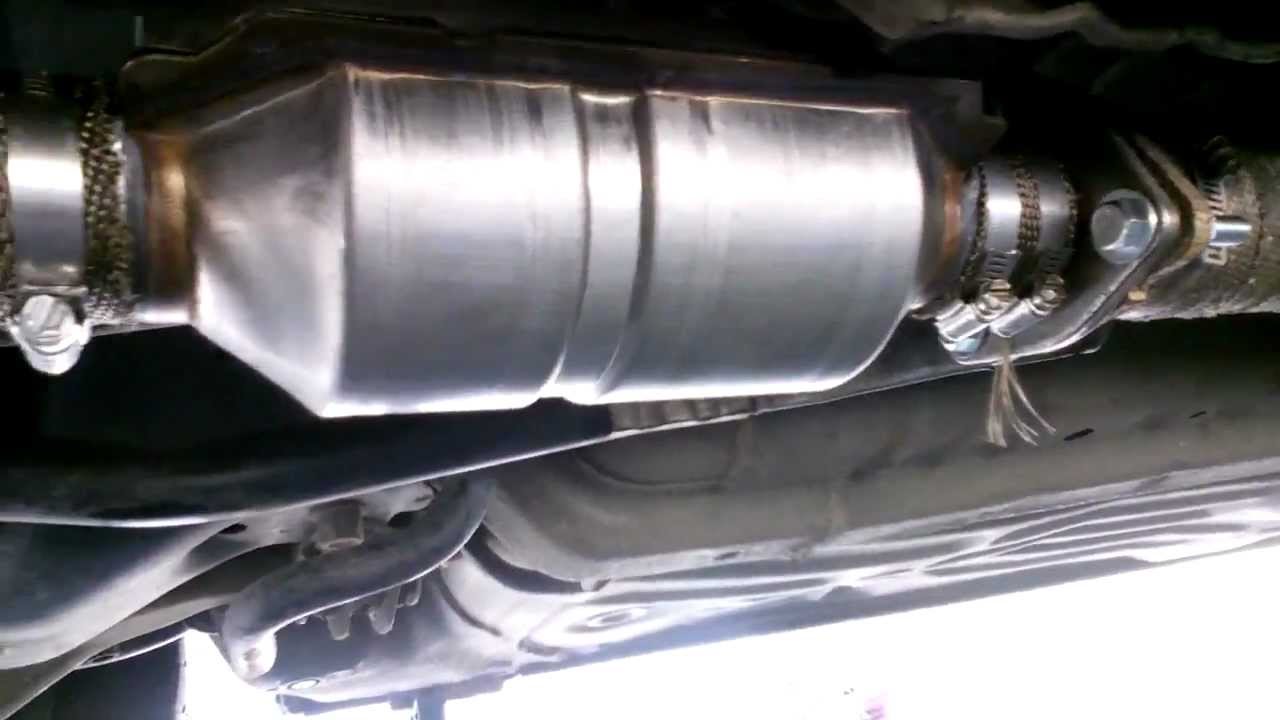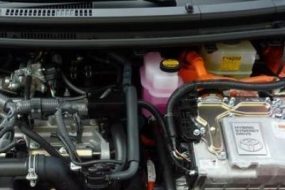
A catalytic converter is an important part of every vehicle’s exhaust or emission system. They contain catalysts like Platinum, Rhodium, and Palladium that speed up the rate at which gases are converted.
Normally the gas that is released by the engine of any car is very toxic and harmful if it gets into the atmosphere that way, that’s why catalytic converters convert these toxic gases to less harmful ones.
Can You Melt Platinum From Catalytic Converters?
Yes, you can melt platinum from a catalytic converter. Platinum can be gotten from catalytic converters by melting the entire catalytic converter in a blast furnace.
However, most people don’t have access to a blast furnace or how to collect it from the bottom of a blast furnace so there are other means by which platinum can be gotten from a catalytic converter.
Platinum is usually located inside catalytic converters and recycling it from used or worn-out catalytic converters can be done in a not-so-easy process that doesn’t even involve melting.
Whether new or already used, extracting platinum from a catalytic converter requires that the catalytic converter is first removed from the vehicle completely.
It is usually located in the exhaust system underneath a car and this can be loosened by using a socket wrench to detach it from the vehicle.
However, if you are in a hurry to get the catalytic converter out of the vehicle, you can employ the means of a cutting torch to separate the converter from the metal attachments that link it to the exhaust system of the vehicle.
This process is more accessible and easy to go through on your own. Although it is more time-consuming than the former in getting the catalytic converter out.
How to Melt Platinum From Catalytic Converters
Melting platinum from catalytic converters can be done only if there’s a blast furnace that’s accessible to who is extracting the platinum.
However, when there is no blast furnace that can be used, the process of aqua regia can be used to extract platinum from the catalytic converter.
Aqua regia is a process of adding hydrochloric acid and nitric acid to extract any platinum group metal.
To melt platinum from catalytic converters, you need to:
1. Detach the Catalytic Converter from the Exhaust System
First, the catalytic converter has to be detached from the vehicle’s exhaust system. This can be done by simply unbolting the bolts that have been used to hold the catalytic converter together with other parts of the exhaust system.
2. Open and Dismantle the Catalytic Converter
After the catalytic converter has been safely gotten out, the next thing to do is to open or dismantle the catalytic converter, you can first cut out the edges so that you’ll have access to the content of the catalytic converter.
3. Wash with Water
Once the converter has been opened and the contents have been gotten, they should first be washed clean with water, after this has been done,
4. Grind and Pound Them
Carefully grind or pound them into the pieces, pound carefully and make sure that nothing gets out.
5. Pour the Pounded Content into a Beaker
After successfully pounding, pour out all the pounded content into a beaker and first add hydrochloric acid, then you can slowly add nitric acid to the solution.
Leave the mixture for a while and sieve afterward to extract your platinum group metals. Aqua regia is used because of the ability of acids to dissolve noble metals.
How to Extract Platinum from Catalytic Converters
Whenever you want to extract platinum from a catalytic converter there are a few basic steps that you must follow.
Please note that this process can be dangerous if the toxic gases are left out and can be harmful to whoever is handling the process.
- First, you must get your safety tools in place, a pair of heavy industrial gloves, and also goggles for protecting the eyes because the content of a catalytic converter can be harmful to the eyes.
- The catalytic converter would first be removed as reiterated earlier, it is located beneath the vehicle’s chassis and it is usually held together by screws or bolts.
- To make the process faster, you can use a flame cutter to separate it from the remaining parts of the car’s emission system, you could also use a saw or a socket wrench.
- The next thing to do is to expose the part that looks like a honeycomb. It is usually made from ceramic material. Get the honeycomb material out from inside the case.
- There’s usually some platinum coating on the surface of the honeycomb material. You can just use the flat part of a flat-head screwdriver to remove the platinum coating.
Why is Platinum in Catalytic Converters?
Platinum plays a very important role in catalytic converters. Essentially, it converts carbon monoxide and other hydrocarbons. It is mostly used alongside palladium and rhodium in catalytic converters.
Platinum performs its best when it’s in a condition where there is excess oxygen and because of its oxidative property, it is often chosen to be the catalyst in cars and machines with diesel engines.
Platinum is widely used in car emissions systems because it catalyzes nitrogen oxide to nitrogen and it oxidizes carbon monoxide and hydrocarbons. It is said to be a very good oxidation catalyst.
It is also used in catalytic converters because of its very high recycling value. Even after platinum has been recycled, it is still worth a lot.
Platinum has a lot of unique qualities and one of them is the fact that when it interacts with sulfur-containing compounds or any other poisonous gas, instead of poisoning the platinum or any other platinum-based catalyst, it restrains them from poisoning the catalyst.
One other reason why platinum is used in catalytic converters is because of its high corrosion resistance and it doesn’t get tarnished.
It is also used in catalytic converters because it is one of the most stable metals that can be used as a catalyst. It is regarded as a noble metal because of this quality.
What is the Value of Platinum?
Platinum is one of the most sought-after catalysts that is used in a catalytic converter because of its value industrially and commercially and because it’s rare.
Platinum is said to be much more valuable than Gold and silver because it is not easy to acquire compared to Gold and silver and the rayon between them is 1:10 which means that for every 10 pieces of gold there’s just 1 platinum.
It is also considered to be very valuable because of the way they are needed and used up in high demand by the automobile industry and all the platinum that’s used in the automobile industry is used in the manufacture of catalytic converters.
Platinum, because of its rarity is more expensive than Gond and silver and it is also denser than gold.
Final Thoughts
The value of platinum has caused the thefts of catalytic converters to be on the rise and vehicles that have expensive catalytic converters should be kept away from places where they can be easily accessible.
The extraction of platinum should be done with utmost care and caution because of how delicate and harmful it can be if anything goes sideways and the gases get into the air or the eyes of the person extracting.









